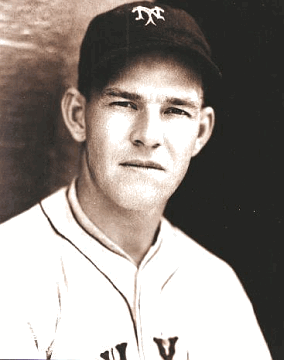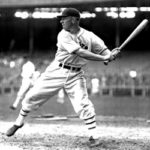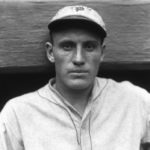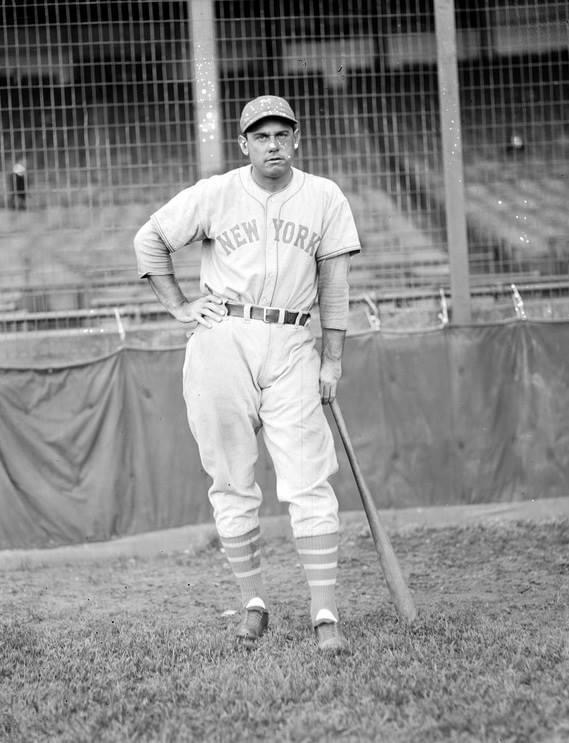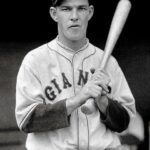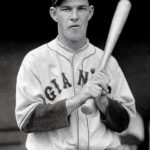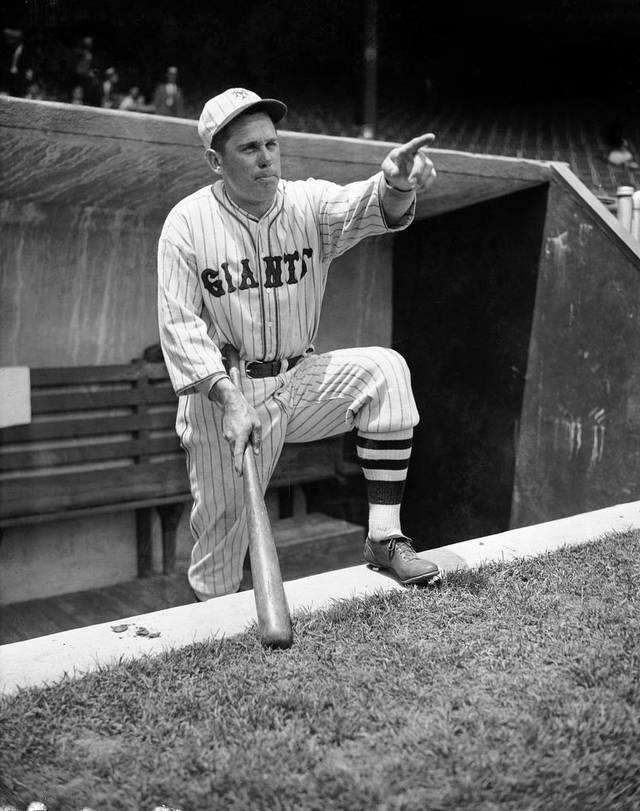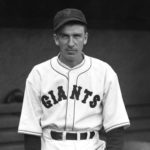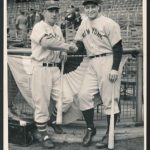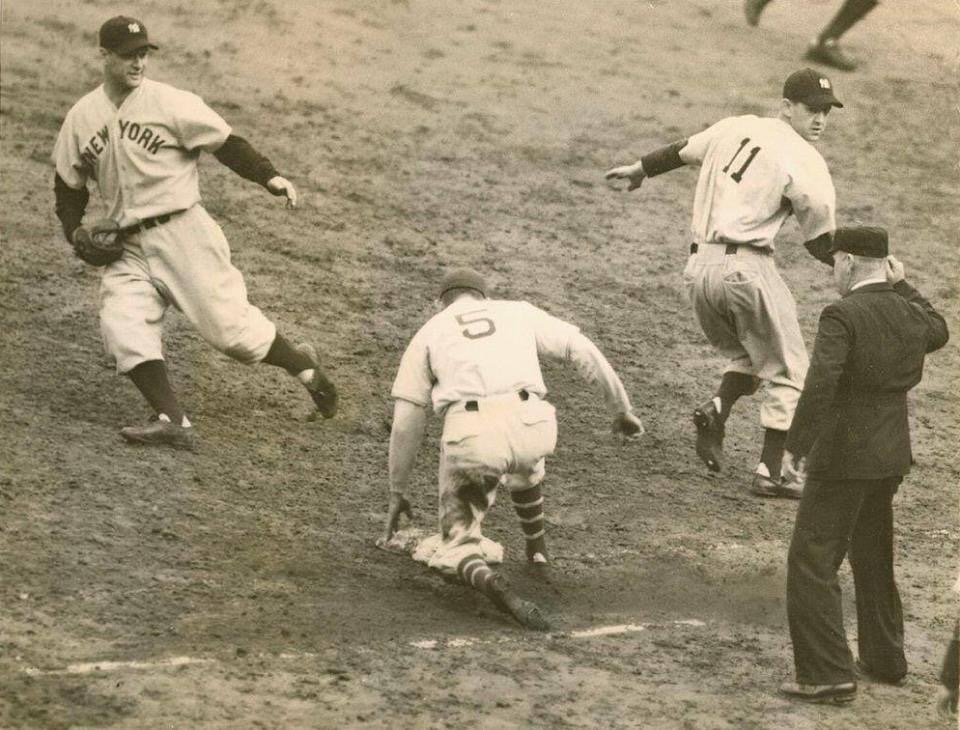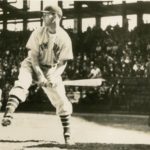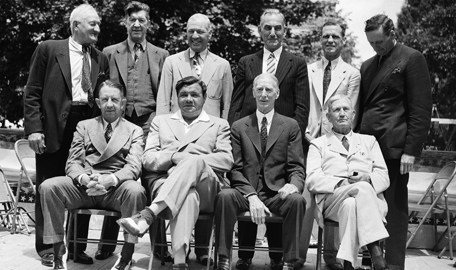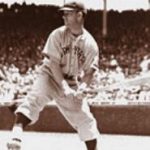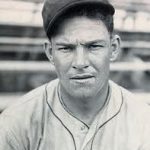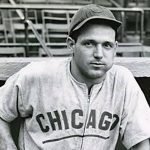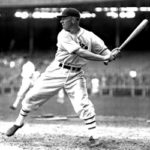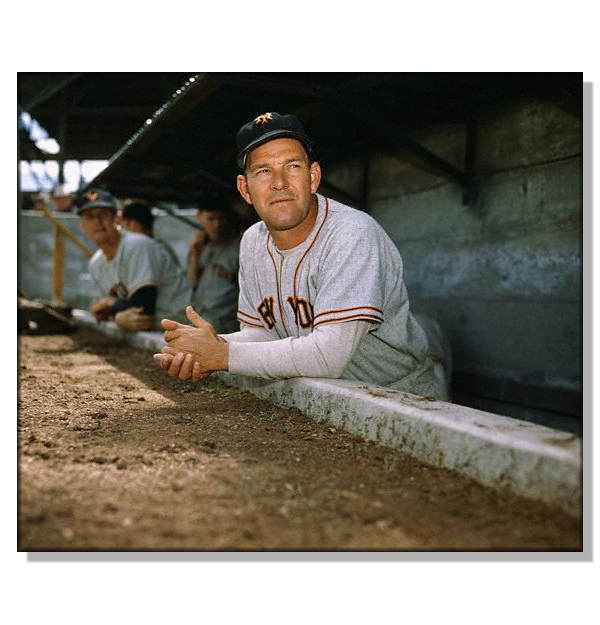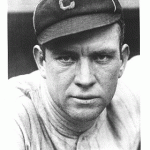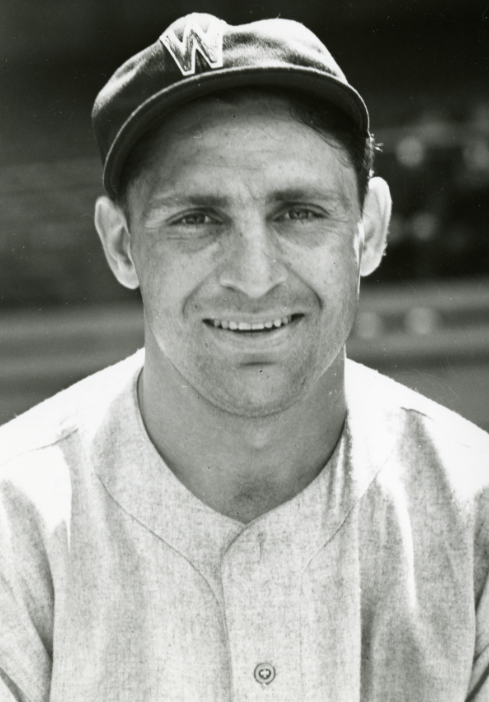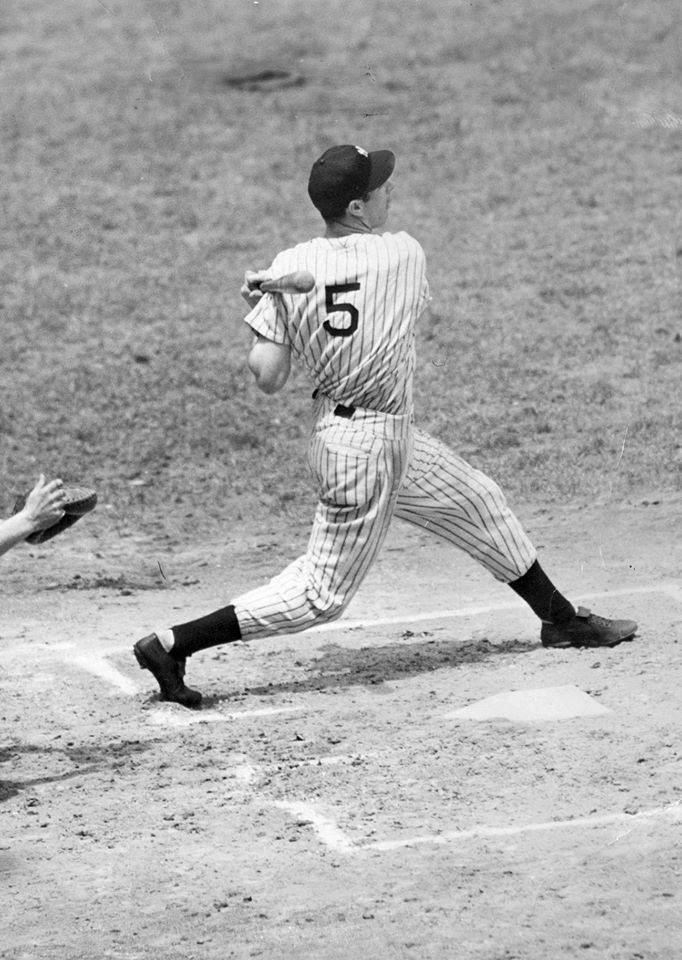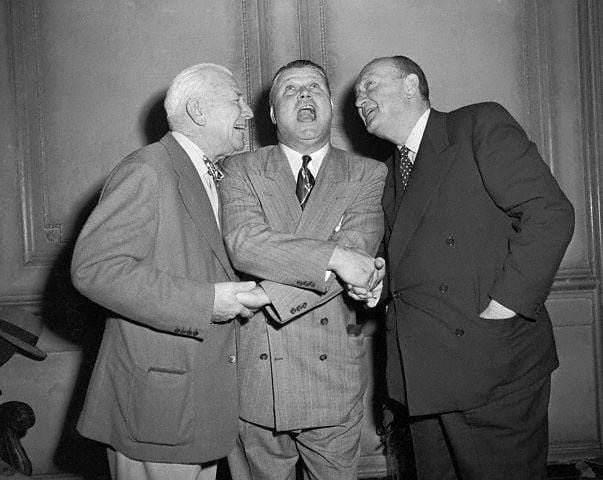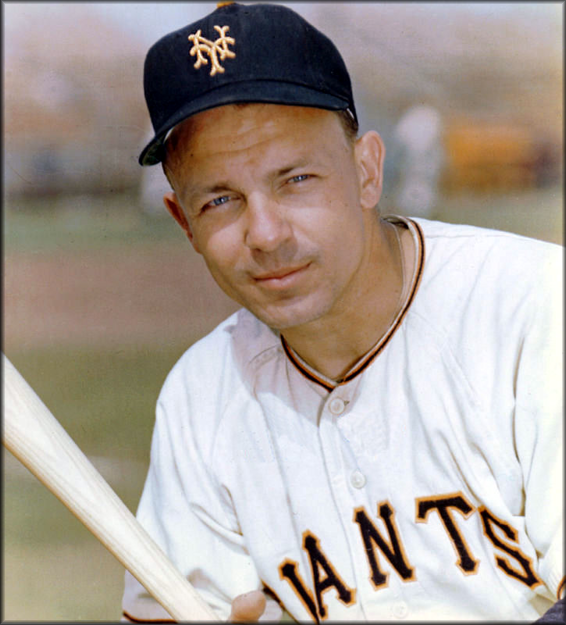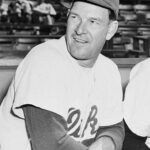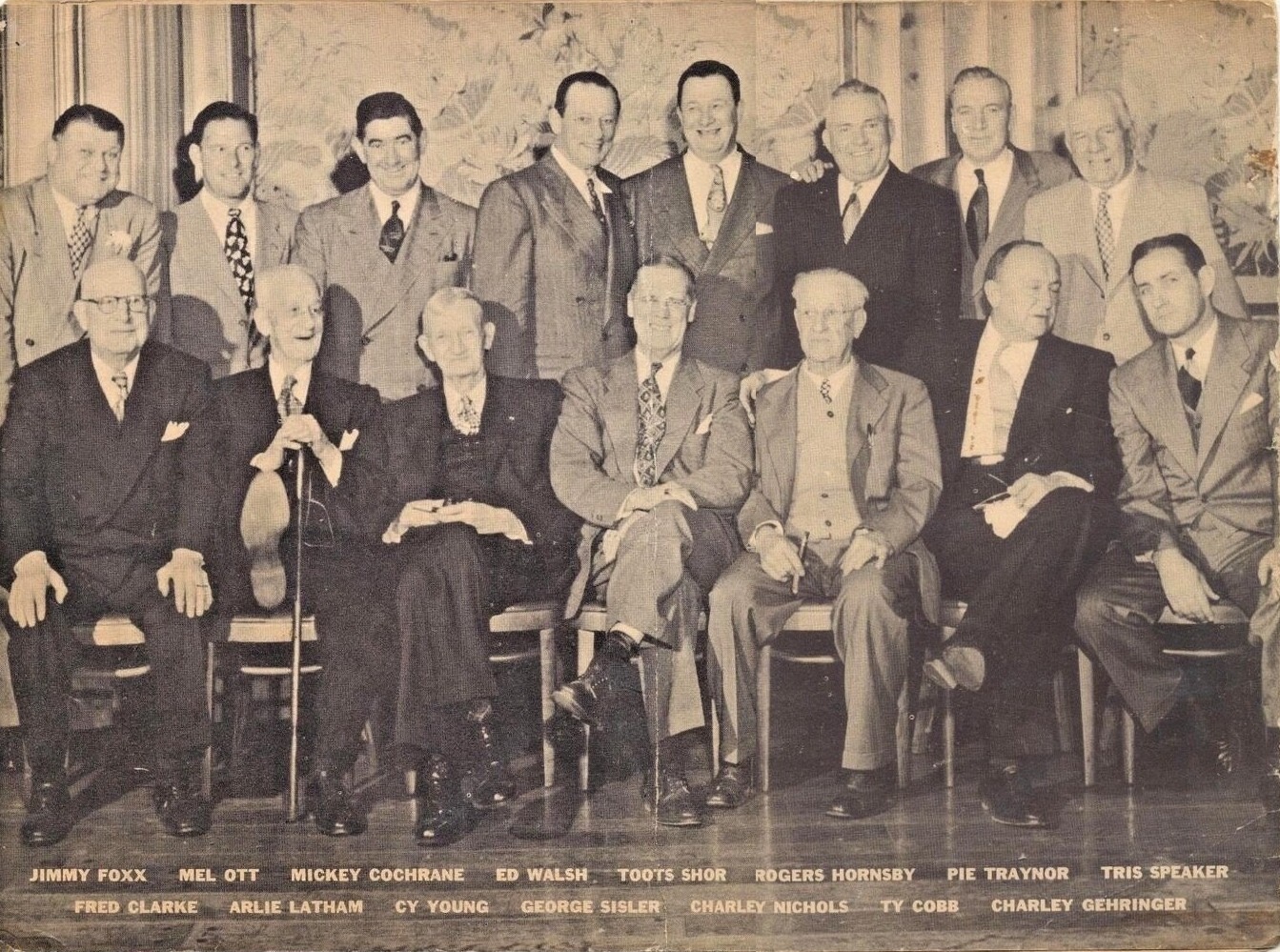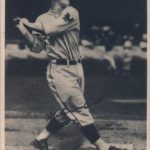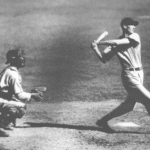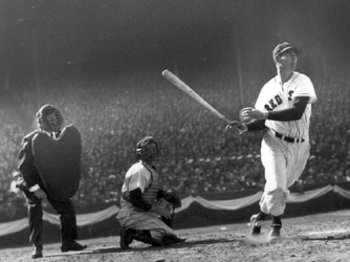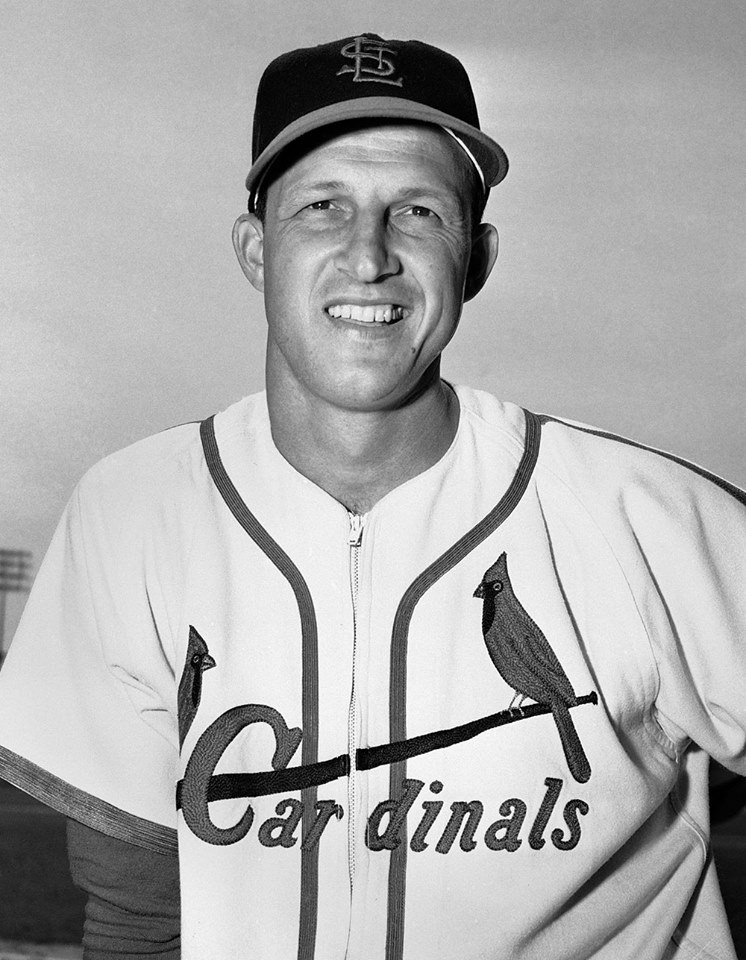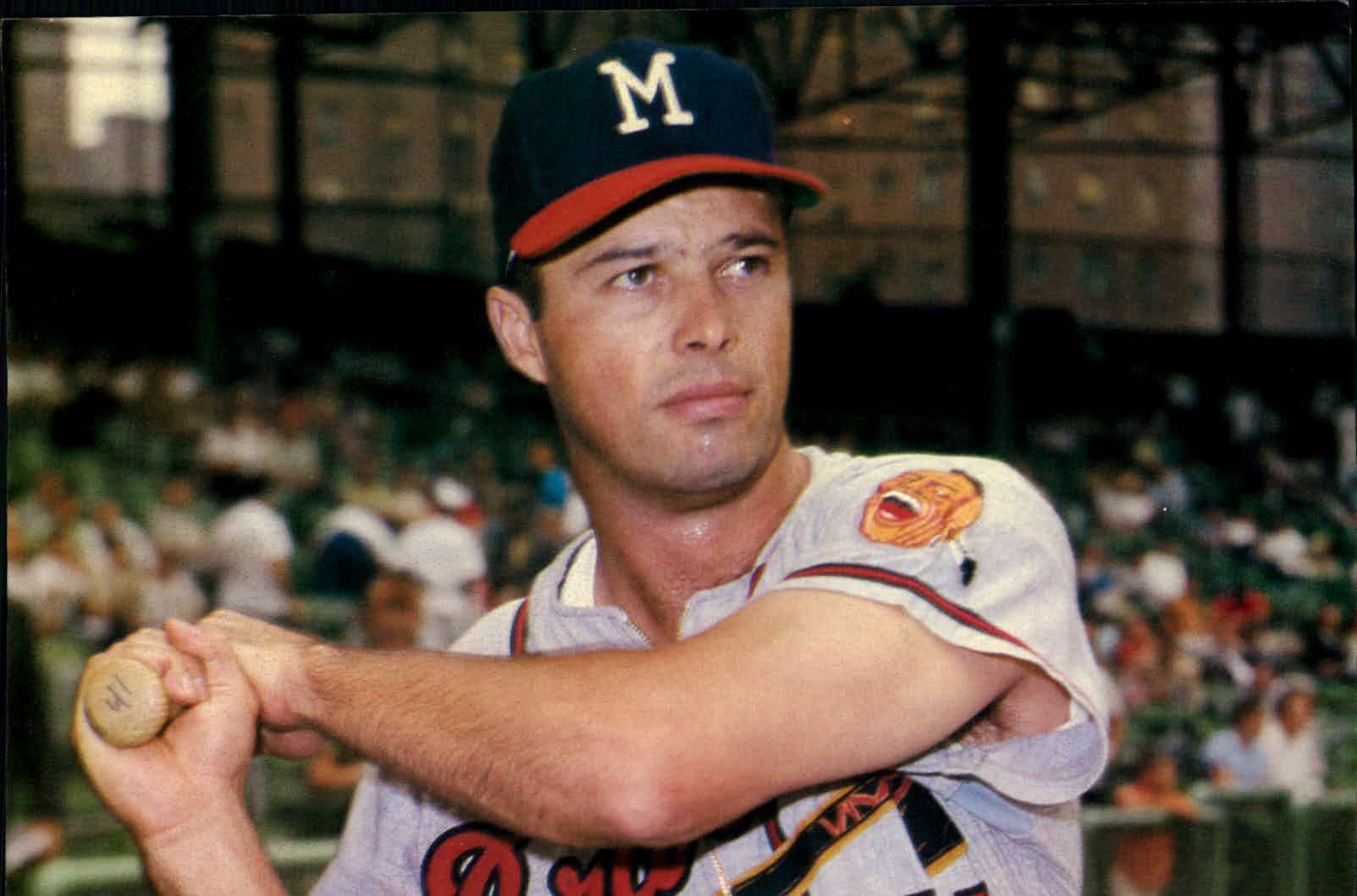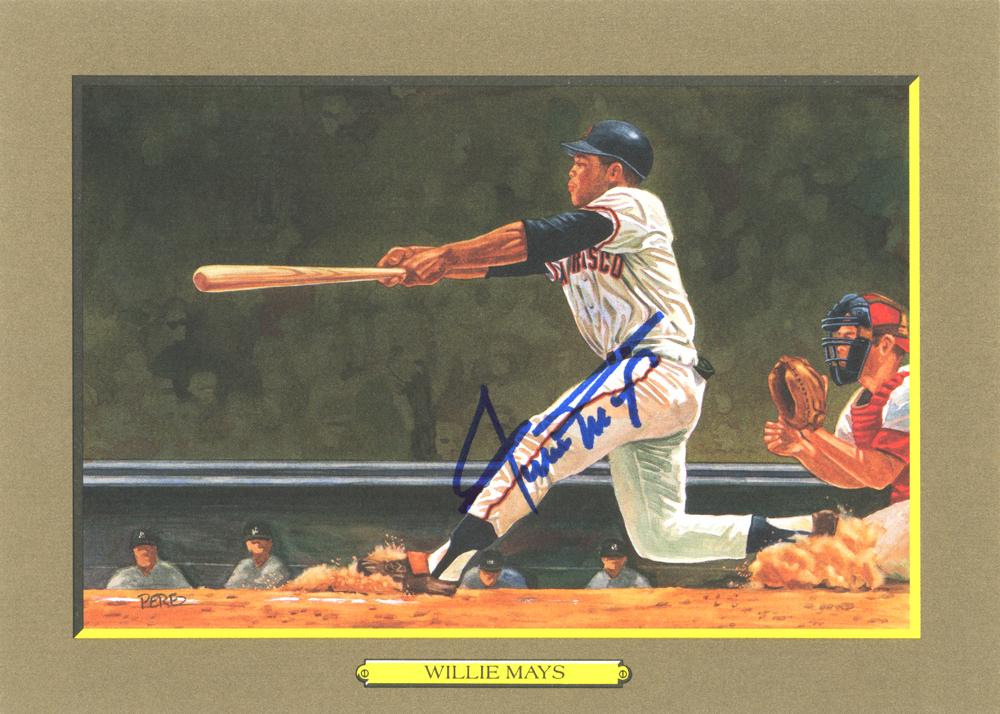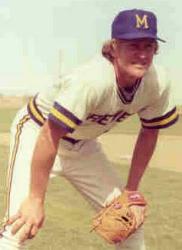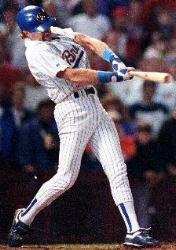Mel Ott Stats & Facts
Mel Ott Essentials
Positions: Rightfield
Bats: Left Throws: Right
Weight: 170 Height 5-9
Born: March 2, 1909 in Gretna, LA USA
Died: November 21, 1958 in New Orleans, LA USA
Buried: Metairie Cemetery, New Orleans, LA
Debut: April 27, 1926 vs. PHI 1 AB, 0 H, 0 HR, 0 RBI, 0 SB
Last Game: July 11, 1947 vs. STL 1 AB, 0 H, 0 HR, 0 RBI, 0 SB
Hall of Fame: Inducted as Player in 1951. (Voted by BBWAA on 197/226 ballots)
View Mel Ott’s Page at the Baseball Hall of Fame (plaque, photos, videos).
Full Name: Melvin Thomas Ott
View Player Bio from the SABR BioProject
Mel Ott Baseball Reference Page
Nine Players Who Debuted in 1926
Mel Ott
Paul Waner
Joe Cronin
Tony Lazzeri
General Crowder
Babe Herman
Ethan Allen
Bump Hadley
Ski Melillo
The Mel Ott Teammate Team
C: Ernie Lombardi
1B: Bill Terry
2B: Rogers Hornsby
3B: Fred Lindstrom
SS: Travis Jackson
LF: Lefty O’Doul
CF: Edd Roush
RF: Ross Youngs
SP: Carl Hubbell
SP: Fred Fitzsimmons
SP: Hal Schumacher
SP: Mort Cooper
RP: Dolph Luque
M: John McGraw
Notable Events and Chronology for Mel Ott Career
Introduction:
Standing just 5’9″ tall and weighing only 170 pounds, Mel Ott hardly presented an imposing figure to opposing pitchers when he stepped into the batter’s box. Yet, in spite of his diminutive stature, Ott was the National League’s top home run hitter during the first half of the twentieth century, holding league records for home runs, runs batted in, runs scored, and bases on balls upon his retirement in 1947.
Biography:
Born in Gretna, Louisiana on March 2, 1909, Melvin Thomas Ott was only 17 years old when he made his major league debut with John McGraw’s New York Giants in April of 1926. Although other members of the Giants’ coaching staff wanted to change the youngster’s unorthodox batting style, which included an unusually high leg kick immediately prior to the pitcher’s release of the ball, McGraw refused to let them tinker with young Ott’s technique. The Giants manager took note of the power and bat speed that Ott’s approach at the plate enabled him to generate, and he wisely permitted his protege to continue employing the same hitting style to which he had become accustomed.
Ott was used sparingly his first two seasons, appearing in a total of only 117 games for the Giants in 1926 and 1927, and hitting just one home run in his first 223 official major league at-bats. But the lefthanded-hitting Ott became New York’s starting rightfielder in 1928, and he soon learned how to take full advantage of the Polo Grounds short rightfield porch by pulling the ball into the stands over the 257-foot sign. Ott hit 18 home runs, drove in 77 runs, and batted .322 in 124 games, before blossoming into a full-fledged star the following year. In just his second full season, the 20-year-old Ott posted the most impressive numbers of his long and illustrious career. He batted .328, finished second in the National League with 42 home runs and 151 runs batted in, placed third with 138 runs scored, a .635 slugging percentage, and a .449 on- base percentage, and led the league with 113 walks.
Ott continued to compile impressive numbers the next three years, placing among the league leaders in home runs, runs batted in, runs scored, on-base percentage, and slugging percentage each season. He was particularly effective in 1930 and 1932. In the first of those years, Ott hit 25 homers, knocked in 119 runs, scored 122 others, and batted a career-high .349. Two years later, he led the National League with 38 home runs, drove in 123 runs, scored 119 times, and posted a .318 batting average.
As Ott established himself as one of the National League’s most feared batsmen, he also developed into a solid outfielder. Blessed with good running speed and a strong throwing arm, Ott was among the senior circuit’s top defensive right fielders. He accumulated as many as 20 outfield assists in five different seasons, and he also committed fewer than five errors seven different times over the course of his career.
After a solid 1933 season, Ott posted exceptional numbers from 1934 to 1938. He surpassed 30 home runs each year, leading the league in that category in four of those five seasons. He also topped 100 runs batted in, 100 runs scored, and batted over .300 in four of those five years, leading the league in RBIs and runs scored once each. Ott was most productive in 1934, when he batted .326, scored 119 runs, and led the league with 35 home runs and 135 runs batted in. He finished fifth in the N.L. MVP voting at season’s end. Ott had another outstanding year in 1938, when he batted .311, knocked in 116 runs, and led the league with 36 homers and 116 runs scored, en route to earning a fourth-place finish in the league MVP balloting. The Giants captured the National League pennant in both 1936 and 1937, and they finished no lower than third in any of the other three years.
Ott remained a starting outfielder for the Giants through 1945, having one more big year in 1942, when he batted .295, drove in 93 runs, and led the National League with 30 home runs, 118 runs scored, and 109 bases on balls. He managed the Giants from 1942 to 1948, serving as the team’s player/manager for all but the final campaign. Ott retired in 1947 with 511 home runs, 1,860 runs batted in, 1,859 runs scored, 2,876 hits, and a .304 batting average. Over the course of his career, Ott surpassed 30 home runs eight times, knocked in more than 100 runs nine times, scored more than 100 runs nine times, and batted over. 300 ten times. He led the league in home runs and walks six times each, runs batted in once, runs scored twice, slugging percentage once, and on-base percentage four times. He was selected to a total of 12 All-Star teams. Ott was the first National League player to surpass 500 home runs, and he remained the senior circuit’s all-time home run leader until he was finally passed by Willie Mays in 1966. Ott holds the major league record for leading his team in home runs for 18 consecutive years.
Still, Ott’s status as a truly great home run hitter has been questioned by many baseball historians, since the friendly right-field porch at New York’s Polo Grounds enabled him to hit 324 of his 511 career homers (or 63 percent) at home.
Ott was elected to the Baseball Hall of Fame in 1951, just four years after he retired from the game. He spent his final few years as a radio and television commentator for Detroit Tigers broadcasts, before being killed tragically in an automobile accident at only 49 years of age in New Orleans on November 21, 1958.@ET-DC@eyJkeW5hbWljIjp0cnVlLCJjb250ZW50IjoicG9zdF90YWdzIiwic2V0dGluZ3MiOnsiYmVmb3JlIjoiTGVhcm4gTW9yZSBhYm91dCB0aGUgdGVhbXMsIHBsYXllcnMsIGJhbGwgcGFya3MgYW5kIGV2ZW50cyB0aGF0IGhhcHBlbmVkIG9uIHRoaXMgZGF0ZSBpbiBoaXN0b3J5IC0gLSAtIC0gLSAtIC0gIiwiYWZ0ZXIiOiIiLCJsaW5rX3RvX3Rlcm1fcGFnZSI6Im9uIiwic2VwYXJhdG9yIjoiIHwgIiwiY2F0ZWdvcnlfdHlwZSI6InBvc3RfdGFnIn19@
Factoids, Quotes, Milestones and Odd Facts
Played For
New York Giants (1926-1947)
Managed
New York Giants (1942-1948)
Ott managed 1,004 games – winning 464 – for a .467 percentage. His best team was his first – in 1942 the New York Giants finished third with 85 victories. He replaced Bill Terry as manager and was replaced by Leo Durocher half-way through the ’48 campaign.
Similar: Sadaharu Oh
Linked: Bill Terry, Leo Durocher, Willie McCovey
Best Season, 1936
Ott was the heart of the team, practically carrying New York into the post-season. He batted .328 with a league-leading 33 homers. He drove in 135 runs (18% of the Giants total runs) and scored 120. He walked 111 times while fanning only 41. His .588 slugging average and 1.036 OPS topped the NL. His team hit just 97 homers, with Ott supplying a third of them. In the Series loss to the Yankees he hit .304 with a homer.
Post-Season Appearances
1933 World Series
1936 World Series
1937 World Series
Factoid
Mel Ott’s 323 home runs hit in the Polo Grounds are the most ever hit by one player in a single ballpark.
Ott is the only man to ever lead his league in home runs while also serving as manager, which he did in 1942. He paced the National League in homers six times, but his career high of 42 in 1929 failed to lead the league. On the final day of that season, Philadelphia pitchers walked him intentionally five times to prevent him from tying their teammate Chuck Klein for the home run title.
On six occasions Ott led the league in walks, a record for the senior circuit. His career walk total was the highest in the NL until broken by Joe Morgan. Twelve times he walked at least 90 times in a season, showing his patience at an early age – walking 113 times at the age of twenty.
Ott was a teenager when he became a regular for the Giants and John McGraw in 1928, hitting 18 home runs. Before he was thirty years old he had 1,939 hits, 342 home runs, 1,306 RBI, 1,035 walks, a .315 average, and a .557 slugging percentage. In his thirties his average tapered to .289 with a .489 slugging mark.
Ott was a solid right fielder who moved to third base in 1937-1938 to help the team. The Giants won three pennants with Ott in the lineup, and garnered a World Series title in 1933. In that Series, Ott homered in the first inning of Game One and in the final (10th) inning of Game Five – giving the Giants the victory. He led all regulars with a .389 average, seven hits, and four RBI. In his three World Series, Ott hit four home runs and batted .295.
Ott was known for his odd batting style, which included a leg kick. He took great advantage of his home ballpark, slugging nearly two-thirds of his longballs in the Polo Grounds. Manager John McGraw refused to allow his coaches or any minor league manager (including Casey Stengel) to change Ott’s batting style.
As a player/manager and manager, Ott posted a .467 percentage in six seasons. His easy-going style prompted Dodger manager Leo Durocher to comment, “Nice guys finish last.” Ironically, it was Durocher who replaced Ott as Giants’ manager in 1948.
Tragically, on November 14, 1958, Ott and his wife were seriously injured in a head-on automobile collision. During life-saving surgery, Ott died at the age of 49.
Where He Played: Ott was a right fielder, playing 2,313 game sin the outfield. He also played six games at second base and notched 256 games at third. In 1937-1938, he was tried at third base to fill a big Giants hole, but by 1939 he was back in right field.
Notes
Ott never won an MVP Award, though he ranked in the top ten in votes six times. His best showing was in 1942 when he finished third to St. Louis Cardinals teammates Mort Cooper and Enos Slaughter.
Hitting Streaks
21 games (1937)
21 games (1937)
All-Star Selections
1934 NL
1935 NL
1936 NL
1937 NL
1938 NL
1939 NL
1940 NL
1941 NL
1942 NL
1943 NL
1944 NL
1945 NL
Replaced
Journeyman George Harper, who hit .331 in 1927 as John mcGraw’s right fielder.
Replaced By
Ott, who was player/manager when he stopped being a full-timer, put Willard Marshall in right field in 1946, after Marshall had returned from the war.
Best Strength as a Player
Patience at the plate.
Largest Weakness as a Player
None
Other Resources & Links

